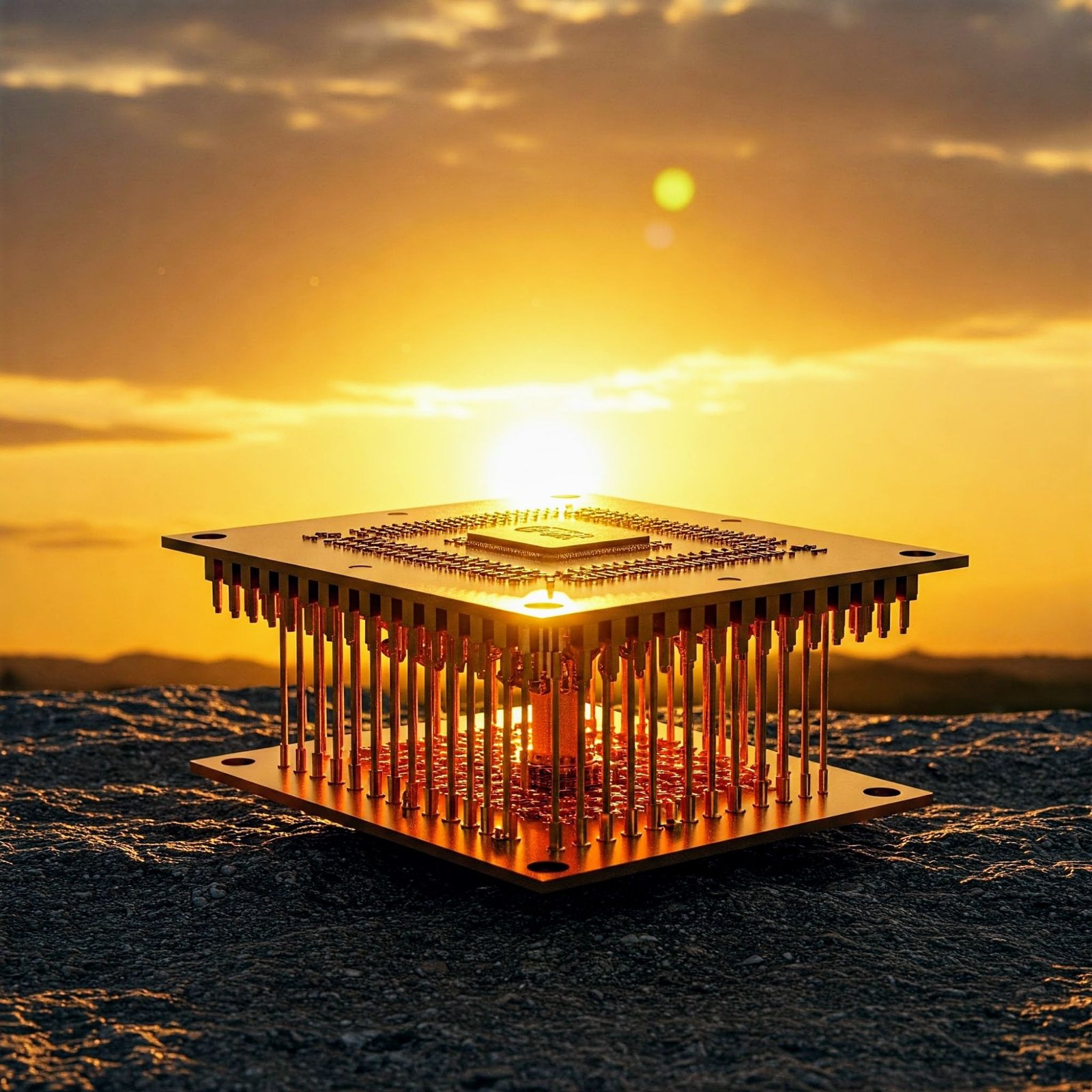AI-Generated Image. How The Microsoft Quantum Computing Chip Will Change The World by Tech Is The Culture
How The Microsoft Quantum Computing Chip Is Making Sci-Fi Look Underwhelming
Let’s face it: quantum computing has always been the tech world’s equivalent of a diva rockstar—promising a revolution but canceling the tour due to “unforeseen technical difficulties.” Enter Microsoft’s Majorana 1 quantum chip, a tiny slab of wizardry that’s part physics breakthrough, part mic drop. Buckle up as we explore how this chip is turning quantum hype into “hold my lab coat” reality.
The Microsoft Quantum Computing Chip That Invented A New State Of Matter (Because Why Not?)
Microsoft didn’t just build a quantum chip—it reinvented reality. The Majorana 1 relies on a topological superconductor, a material so exotic it’s not a solid, liquid, gas, or even plasma. It’s basically the mood ring of quantum states, changing its properties under extreme conditions (think: colder than outer space and more high-maintenance than a soufflé).
How exotic? The chip uses Majorana particles—theoretical quasiparticles first proposed in 1937 that act like half an electron and are their own antiparticles. Imagine a pair of shoes that’s simultaneously left and right. Now imagine those shoes solving climate change. That’s Microsoft’s vibe here.
Why This Microsoft Quantum Computing Chip Isn’t Just For Nerds Who Enjoy Liquid Helium
Million-Qubit Dreams in a Fridge-Sized Machine
Current quantum chips are like toddlers—cute but error-prone. Google’s 53-qubit Sycamore? Adorable. IBM’s 433-qubit Osprey? Getting there. But Microsoft’s Majorana 1 is eyeing 1 million qubits on a single chip, all chilling in a fridge smaller than your local bodega’s slushie machine.
Why does this matter? A million qubits could simulate molecular interactions so precisely, they’d make today’s supercomputers look like abacuses. Think: designing self-healing concrete for bridges, catalysts to dissolve microplastics, or enzymes that turn kale into something edible.
Error Resistance (Because Quantum Bits Are Drama Queens)
Qubits are notoriously fragile—sneeze in the next room, and they’ll collapse like a Jenga tower. Microsoft’s topological qubits, however, store data in Majorana zero modes, which hide quantum information like a squirrel burying acorns. Even better: they’re controlled digitally (read: fewer lab meltdowns).
As Microsoft’s Chetan Nayak puts it, “We’re not just building a quantum computer—we’re building one that won’t throw a tantrum mid-calculation.”
DARPA’s Stamp of Approval (and a Side of Patriotism)
The U.S. Defense Department’s R&D wing, DARPA, greenlit Microsoft for its Underexplored Systems for Utility-Scale Quantum Computing program. Translation: Uncle Sam wants this tech yesterday, probably to out-quantum China and/or finally fix the DMV.
Real-World Applications (From Microplastics to “Make Me a Battery, Hal”)
Self-Healing Materials
Imagine bridges that patch their own cracks or phone screens that un-shatter themselves. Microsoft claims million-qubit systems could simulate material behaviors so accurately, engineers could design these Franken-materials on the first try.
Climate Change Fix-Its
Quantum computers could identify catalysts to break down microplastics or optimize carbon capture molecules. Basically, it’s like giving Mother Nature a cheat code.
Drug Discovery on Steroids
Instead of lab trials that take decades, scientists could simulate drug interactions at the atomic level. COVID-25? More like COVID-bye.
AI’s New Best Friend
Pair quantum computing with AI, and you get a system that can “speak nature’s language.” Ask it to design a battery that charges in 10 seconds, and it’ll spit out the recipe like a sous-chef on Red Bull.
The Catch Is It’s Still Very Complicated (And Cold)
The “Atom-By-Atom” Baking Show
Building a topological superconductor isn’t Ikea furniture assembly. Microsoft had to spray indium arsenide and aluminium atom by atom, a process best described as “extreme nanotechnology origami.” The result? A material that only works at 50 millikelvin—roughly -459°F, or “Why did I leave my latte in the lab?” cold.
Skeptics Gonna Skept
Some physicists are side-eyeing Microsoft’s claims. University of Sydney’s Stephen Bartlett notes, “They’ve shown how to measure a topological qubit… but they haven’t actually built one yet.” Others warn that scaling from 8 qubits to a million is like going from a tricycle to a SpaceX rocket—possible, but don’t pack your Mars suitcase yet.
Is The Future Quantum Ready Or Quantum Curious?
Microsoft’s rolling out a Quantum Ready program to prep industries for the coming revolution. Think of it as Hogwarts for CEOs—workshops on quantum-safe encryption, hybrid AI-quantum apps, and how to avoid looking clueless at board meetings.
Meanwhile, competitors like Google and IBM aren’t twiddling their thumbs. Google’s Willow chip reduced errors, while startups like PsiQuantum promise usable systems by 2030. But Microsoft’s betting big on topology, hoping to skip the qubit drama and leap straight to reliability.
Is This The Real Deal Or Just Quantum Hype 2.0?
The Microsoft quantum computing chip is either a watershed moment or a very expensive science fair project. But consider this: after 19 years of R&D, 160 researchers, and enough liquid helium to freeze a small moon, they’ve at least earned the right to a victory lap.
As tech analyst John Koetsier stated, “Quantum computing is like fusion energy—always 20 years away. But Microsoft just reset the clock to ‘maybe five’.”
So, will the Majorana 1 save the world? Ask again in 2030. For now, it’s the most exciting thing to happen to quantum since the Schrödinger’s cat meme.
Most of us are still waiting for our quantum-powered coffee maker.
Let us know your thoughts on the subject at techistheculture.bsky.social. Keep ahead of the game with our newsletter & the latest tech news.
Disclaimer: This article contains some AI-generated content that may include inaccuracies. Learn more [here].


